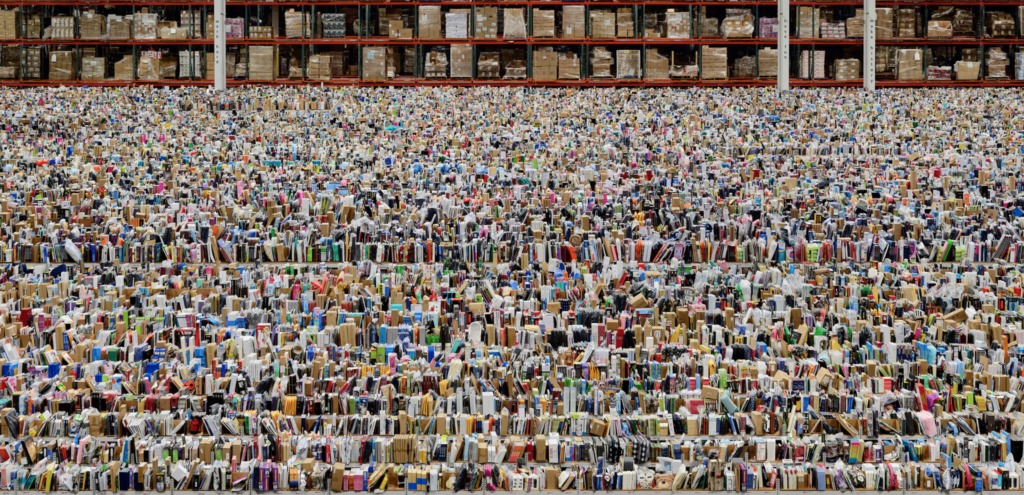
Hayward Gallery, London
From raves to road trips, from the icecaps to the trading floor, from Amazon to the Rhine, these breathtaking panoramas take aim at globalism – and reinvent the very notion of photography.
Over the last two decades, Andreas Gursky has become the most significant image-maker of our time. Not just for the topicality of his subject matter – the scale and reach of global capitalism, the thrust of 21st-century commerce and the fragility of the planet – but for his grand-scale, digitally driven reinvention of the very notion of the photographic image. In his epic panoramas, from the frenzied activity on the Chicago stock exchange to the painterly stillness of the Rhine, nothing is as it initially appears. Often what you are seeing is a digitally created composite image: several photographs seamlessly knitted together. It is photography but not as we know it.
Indeed, if you look closely at certain images – May Day IV, for example, his depiction of a vast German rave – you can pick out the same person appearing more than once. In the vast Ocean 11, satellite images are used in the creation of an overhead shot of an area so enormous it defies “normal” photography. Gursky’s digitally enhanced, almost godlike vision is the main reason he so disturbs traditionalists. But the issues of authenticity that concerned many of his contemporaries as they made the move from analogue to digital seem never to have entered his mind.
